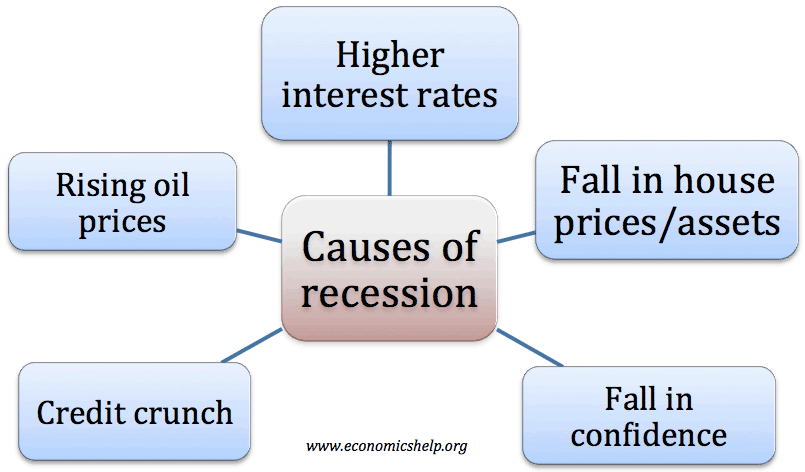Analyzing Uber's Recession Resistance: Factors Contributing To Its Strength

Table of Contents
Uber's Adaptability and Diversification as a Key Factor in Recession Resistance
Uber's success isn't solely attributed to its ride-sharing service. Its diversification strategy has been instrumental in its recession resistance. Instead of relying on a single revenue stream, Uber has strategically expanded into various markets, creating multiple revenue streams and mitigating risk associated with economic fluctuations. This diversification protects them from downturns affecting one sector while others thrive.
- The meteoric rise of Uber Eats: The growth of Uber Eats, particularly during pandemic-related lockdowns, showcased the power of diversification. While ride-sharing demand decreased in some areas, food delivery experienced a surge, bolstering overall revenue and demonstrating the value of a diversified portfolio.
- Strategic expansion into new markets and services: Uber's expansion into new geographic regions and service categories, such as Uber Freight (logistics) and Uber Health (healthcare transportation), demonstrates a proactive approach to mitigating risk. By catering to diverse markets, Uber reduces its vulnerability to economic shocks impacting specific sectors.
- Strategic acquisitions: Uber's acquisition of smaller companies has played a role in enhancing its existing services and expanding its market reach. This proactive approach allows them to integrate innovative technologies and services, strengthening their competitive edge and overall resilience.
These diversification strategies highlight Uber's remarkable market adaptability and its ability to generate revenue from multiple sources, key components of its strong recession resistance.
The Gig Economy Model and Its Impact on Uber's Recession Resistance
Uber's reliance on a gig economy model significantly contributes to its recession resistance. This flexible workforce structure provides several advantages during economic downturns:
- Lower fixed costs: Unlike traditional employment models with high fixed labor costs, Uber's gig economy model allows them to adjust operational expenses based on demand. This inherent flexibility allows them to reduce costs during periods of reduced demand without significant workforce restructuring.
- Scalability: The gig economy allows Uber to easily scale operations up or down depending on market demand. During economic booms, they can quickly expand their workforce. During downturns, they can contract without the significant financial burden of layoffs or severance packages.
- Reduced overhead during periods of reduced demand: The ability to reduce the number of active drivers during low-demand periods significantly reduces operational costs, directly contributing to improved financial stability during economic uncertainty.
This flexible, scalable workforce is a significant component of Uber's ability to navigate economic fluctuations efficiently.
Uber's Pricing Strategies and Their Role in Maintaining Profitability During Economic Downturns
Uber's dynamic pricing model is another critical aspect of its recession resistance. This data-driven approach allows them to optimize pricing across varying market conditions:
- Surge pricing: During peak hours or high demand situations, surge pricing increases prices, maximizing revenue during periods of high demand and compensating for potential losses during low-demand periods.
- Promotional offers and discounts: To attract riders during low-demand periods, Uber strategically employs promotional offers and discounts, stimulating demand and preventing revenue stagnation.
- Data-driven optimization: Uber leverages data analytics to understand demand elasticity and optimize pricing strategies for maximum revenue generation, a critical factor in navigating economic fluctuations.
This dynamic approach to pricing ensures Uber maintains profitability even during periods of fluctuating demand, a testament to its sophisticated revenue optimization techniques.
Technological Innovation and Efficiency as a Competitive Advantage
Uber's continuous technological innovation plays a crucial role in its recession resistance. Technological advancements contribute to operational efficiency and a competitive advantage:
- Efficient matching algorithms: Uber's sophisticated matching algorithms optimize driver-rider connections, minimizing wait times and maximizing efficiency, contributing to a positive user experience and operational cost savings.
- Technological improvements in logistics and operations: Constant improvements in route optimization, real-time tracking, and other logistical aspects enhance efficiency and reduce operational costs.
- Data analytics for better resource allocation and decision-making: Data analytics provide valuable insights into demand patterns, allowing Uber to make informed decisions about resource allocation, ensuring optimal efficiency and cost-effectiveness.
This commitment to technology enhances its operational efficiency, strengthens its competitive positioning, and ultimately contributes to its overall financial resilience.
Understanding and Leveraging Uber's Recession Resistance
In conclusion, Uber's recession resistance stems from a combination of factors: adaptability through diversification, a flexible gig economy model, strategic pricing strategies, and a commitment to technological innovation. Understanding these strategies is crucial for businesses seeking to build their own economic resilience. Learn how to build your own recession resistance by analyzing the key strategies employed by Uber. By adopting similar approaches, businesses can enhance their ability to weather economic downturns and achieve long-term financial stability. [Link to related resources (if applicable)]

Featured Posts
-
 Fbi Investigation Suspect In California Fertility Clinic Explosion Likely Perished
May 19, 2025
Fbi Investigation Suspect In California Fertility Clinic Explosion Likely Perished
May 19, 2025 -
 Eurovision 2025 The Complete Guide
May 19, 2025
Eurovision 2025 The Complete Guide
May 19, 2025 -
 Cubs Offense Tests Mets Dominant Pitching In Key Nl Series
May 19, 2025
Cubs Offense Tests Mets Dominant Pitching In Key Nl Series
May 19, 2025 -
 Wednesdays Cardinal Report Key News And Notes
May 19, 2025
Wednesdays Cardinal Report Key News And Notes
May 19, 2025 -
 The Trial A Complete Breakdown Of Teas Crime And Family Outcome
May 19, 2025
The Trial A Complete Breakdown Of Teas Crime And Family Outcome
May 19, 2025
